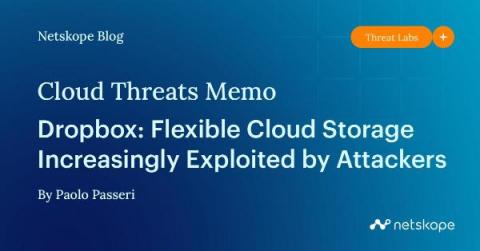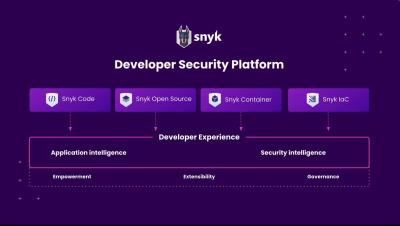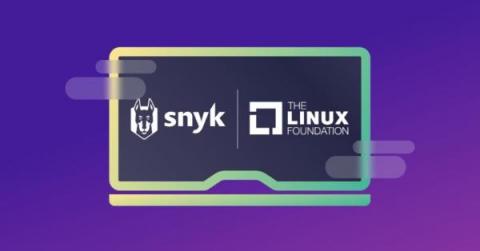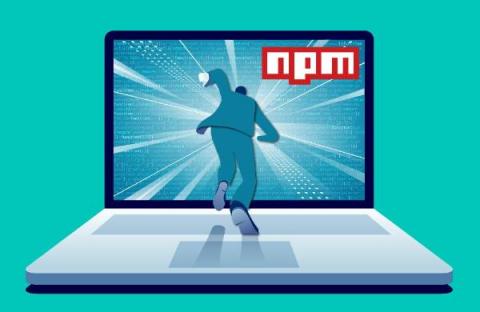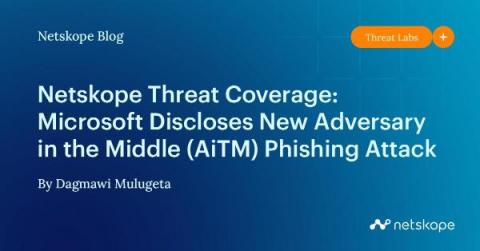Security | Threat Detection | Cyberattacks | DevSecOps | Compliance
July 2022
Exploit of Log4Shell Vulnerability Leads to Compromise of Major South American Vaccine Distributor
On June 23, The Cybersecurity and Infrastructure Security Agency (CISA) and the United States Coast Guard Cyber Command (CGCYBER) released a joint Cybersecurity Advisory (CSA) warning network defenders that cyber threat actors, including state-sponsored advanced persistent threat (APT) actors, have continued to exploit CVE-2021-44228 (Log4Shell) in VMware Horizon® and Unified Access Gateway (UAG) servers.
Austrian Cyber Mercenaries Caught Exploiting Windows, Adobe Zero-Days
Read also: Digital security giant Entrust hit with ransomware, the US doubles a reward for info on North Korean hackers, and more.
A Day In the life of a CISO
The Developer's Guide to IaC Scanning
IaC (infrastructure as code) is the latest tool to transform the face of IT infrastructure – in a nutshell, it means managing and provisioning infrastructure through code instead of manual processes. IaC provides developers with a blueprint that allows them to create tools and provision infrastructure on-demand while staying in control, increasing efficiency, and maintaining consistency when deploying updates and changes.
Stranger Danger: Your JavaScript Attack Surface Just Got Bigger
Buffer overflow attacks in C++: A hands-on guide
A buffer overflow is a type of runtime error that allows a program to write past the end of a buffer or array — hence the name overflow — and corrupt adjacent memory. Like most bugs, a buffer overflow doesn’t manifest at every program execution. Instead, the vulnerability is triggered under certain circumstances, such as unexpected user input.
[Webinar] Detecting intrusion in DevOps environments with AWS canary tokens
Snyk Unveils Snyk Cloud, the Industry's First Developer-Centric Cloud Security Solution
CrowdStrike Expands CNAPP Capabilities to Secure Containers and Help Developers Rapidly Identify and Remediate Cloud Vulnerabilities
ML Detection of Risky Command Exploit
As described in Splunk Vulnerability Disclosure SVD-2022-0624, there is a list of SPL (Search Processing Language) commands that are classified as risky. This is because incorrect use of these risky commands may lead to a security breach or data loss. As a precautionary measure, the Splunk Search app pops up a dialog, alerting users before executing these commands whenever these commands are called.
The lifecycle of a software vulnerability
This is the second part of a three-blog series on startup security. Please check out part one too. The anatomy of a software vulnerability is a bit like mercury accumulation in seafood. Trace amounts of naturally occurring mercury in seawater is absorbed by algae and bioaccumulates up the food chain. Large fish at the top of the food chain contain the most mercury and should be consumed in limited quantities.
Cloud Threats Memo: Dropbox: Flexible Cloud Storage Increasingly Exploited by Attackers
Researchers from ESET have shed light on a new macOS backdoor, discovered in April 2022, dubbed CloudMensis. At first glance this is just the latest example of spyware targeting the Apple operating system with the intent of exfiltrating documents, keystrokes, and screen captures. However, as the name suggests, one of the interesting features of this malware is a sophisticated two-stage kill chain that exploits legitimate cloud services in different phases of the attack.
Snyk Demo in 20 Minutes | 2022
A CISO's Guide to Container Security: Understanding Vulnerabilities & Best Practices
Companies are introducing new apps and services to enable remote work, improve supply chains and handle disruptions caused by the pandemic. Our digital-first world thrives on speed and efficiency, and containers play a huge part in getting applications up and running quickly. Though containers offer many advantages over traditional virtualization, they also introduce significant security risks.
Best practices for your first 30 days with Snyk
This post is applicable to Business plan and Enterprise plan customers. Adopting a new platform can seem intimidating, but with Snyk it doesn’t have to be. We have three tips to help you roll out Snyk, and have a seamless and successful first 30 days across your business or enterprise. Before you start inviting team members and importing projects, you’ll want to consider your account strategy, set up single sign-on (SSO), and configure your first organization.
CVE-2022-22280 - Critical SonicWall Vulnerability Impacting Analytics On-Prem and Global Management System Products
Cisco Nexus Dashboard Vulnerabilities: CVE-2022-20857, CVE-2022-20858 and CVE-2022-20861
5 Essential Skills to Become a DevSecOps Engineer
Security has become increasingly integrated with software development over the last few years, and the software industry needed a new role to own secure software development processes. As a result, DevSecOps Engineer role has emerged and gained popularity in the last decade. DevSecOps is the abbreviation of three words; Development, security, and operations, and it aims to develop applications more securely in the software development life cycle (SDLC).
Webinar recap: Snyk and the new era of software security
Snyk’s Senior Product Marketing Manager, Frank Fischer, recently hosted a webinar about the value in using a developer security platform to secure code, dependencies, containers, and infrastructure as code (IaC). During this talk, Fischer discussed the shift in software security that has occurred over the past decade, the need for developers to take part in the security process, and the value of Snyk in securing the entire development lifecycle.
Phishing: Better Proxy than Story
In the last phishing blog we discussed how modern phishing works on the frontend. Read on to find out how threat actors can easily find and authenticate a suitable domain by modifying both Gophish and Evilginx to evade security controls In the last phishing blog we discussed how modern phishing works on the frontend. Here we go behind the scenes to dissect how to configure and authenticate a good domain for your phishing campaign using Apache as Reverse Proxy. Excited? You caught the hook, read on!
Top 5 NPM Vulnerability Scanners
The world of software development has been rocked by JavaScript. With nearly every modern web app making extensive use of JavaScript on the front end. And with JavaScript’s popularity also on the backend with Node.js, it’s hardly surprising that new vulnerabilities are emerging daily, given the sheer volume of open source project dependencies being used by JavaScript developers. The culprit? It all comes down to the free-ware NPM packages installed within Node.js.
Addressing cybersecurity challenges in open source software with the Linux Foundation
Snyk recently partnered with the Linux Foundation to produce a report focusing on the state of security in the open source software (OSS) space. The report was based on 550+ survey responses and 15 interviews with OSS maintenance and cybersecurity experts. Following the report’s publication, experts from Snyk held a webinar with the Linux Foundation to discuss some of the key insights.
CVE-2022-26136 & CVE-2022-26137 - Multiple Critical Vulnerabilities in Atlassian Products
Webinar recap: The missing story with every cloud breach
Snyk’s Chief Architect, Josh Stella, recently hosted a webinar about cloud security. Stella was the co-founder and CEO of Fugue, a cloud security and compliance company that was acquired by Snyk. With the capabilities of Fugue, Snyk will bring its developer-first security platform into the cloud security space. During this talk, Stella discussed the missing story in every cloud breach: the tale of how, when, and where attackers operate in the cloud.
Top 5 tips for C++ security
C++ has become a pivotal part of the modern day tech industry. It has been used for multiple purposes, such as desktop applications, server applications, gaming, virtual reality, internet of things firmware, and even as the foundation for many modern day programming languages. Since the initial C++ release in 1985, as an extension to the C programming language, it was designed with an orientation towards system programming and embedded resource development.
How to Conquer Remote Code Execution (RCE) in npm
Recently, there have been some remote code execution (RCE) attacks that included just a single line of well-built code that can run a remote shell. Let’s take a look at why and how these attacks work, why npm is particularly susceptible, what could happen if they get into machines, and how to detect and fix them.
OWASP Top Ten: Insecure Design
OWASP Top Ten: Insecure Design A new addition to the OWASP Top Ten, Insecure design is one of the leading causes of data breaches today. By understanding and avoiding these patterns, you can make your Web Applications more secure. In this blog post, we will give you a brief overview of Insecure Design and provide tips on how to avoid this vulnerability in your own applications.
10 React security best practices
The date on this post reflects its latest update. This post was originally published on October 28, 2020. Looking for the best ways to secure your React app? Then you’ve come to the right place! We’ve created this checklist of React security best practices to help you and your team find and fix security issues in your React applications. We’ll also show you how to automatically test your React code for security-related issues and automatically fix them. Let’s get to it!
Decade Retrospective: The State of Vulnerabilities
The Spanish philosopher George Santayana is credited with the aphorism “Those who cannot learn from history are doomed to repeat it.” This statement is particularly true when it comes to cybersecurity. Threat actors reuse well-known and previously patched vulnerabilities and attempt to take advantage of organizations making the same error over and over. So, if one does not know what has recently taken place it leaves you vulnerable to another attack.
What's the Difference Between Penetration Testing vs Vulnerability Scanning?
Penetration testing and vulnerability scanning are both important practices that protect the network of a business. However, the two are very different from each other in the way they test the security and vulnerabilities of a network. Keep reading to learn more about the differences and how to decide whether one or both would best suit your needs.
Netskope Threat Coverage: Microsoft Discloses New Adversary-in-the-Middle (AiTM) Phishing Attack
On July 12, 2022, Microsoft researchers disclosed a large-scale phishing campaign that has targeted more than 10,000 organizations since September 2021. The campaign used adversary-in-the-middle (AiTM) phishing sites to proxy the authentication process and hijack the victims’ Office 365 session cookies.
CVE Severity: Approaches for When & How To Manage Builds
In a-near perfect world, you would instantly fix your application every time a relevant CVE was issued. (In a truly perfect world, of course, there would be no security incidents, and hence no CVEs in the first place.) But in the real world, reacting to CVEs requires a careful calculation. You need to assess whether each CVE is serious enough to warrant the rejection of a build and a delay of a release.
Are your visuals making businesses more vulnerable to cybercrime?
In the world of modern business, companies must put extra effort into creating engaging visual content to stand out from the crowd. Social media marketing, for instance, was once deemed an easy way for companies to reach additional eyes but today, marketing is a lot more competitive than simply creating a post and hoping it goes viral.
Improving developer experience with security tools at Pinterest
Using open source libraries securely is an ongoing priority at large organizations. One big challenge is integrating security tools into the developer workflow — and setting up a system that prioritizes vulnerability fixes — without overwhelming developers. But what does a successful approach look like?
The security course missing from higher education
Have you ever looked at the curriculum offered in a Computer Science program? Across many different universities, there are some commonalities among the courses students take. Generally, there’s an introductory course in the first semester that introduces students to the world of computer science. Then over the course of subsequent semesters, students take courses about programming (including an introduction to OOP), databases, data structures, etc.
5 Common blind spots that make you vulnerable to supply chain attacks
Over the past several years, hackers have gone from targeting only companies to also targeting their supply chain. One area of particular vulnerability is company software supply chains, which are becoming an increasingly common method of gaining access to valuable business information. A study by Gartner predicted that by 2025, 45% of companies will have experienced a supply chain attack.
Exploring CVE-2022-33980: the Apache Commons configuration RCE vulnerability
Before we dive into the details of this vulnerability, we want to make it clear that there’s no need for panic. Many systems permit the use of various types of code in configuration files, and there are legitimate use cases to include string and variable interpolation in the configuration of applications and systems. This is not Log4Shell all over again. This is simple configuration manipulation.
China Suffers One of the Largest Data Breaches in History of Mankind
Read also: Google fixed a zero-day vulnerability in Chrome browser, Marriott fell a victim of cyber extortionists, and more.
OWASP Top Ten: Cryptographic Failures
Cryptographic Failures are a major security problem. They can lead to data breaches, identity theft, and other serious problems. The Open Web Application Security Project (OWASP) has identified ten major failures. These failures can be divided into three categories: Cryptographic design flaws, cryptographic implementation errors and cryptographic key management.
CyRC Vulnerability of the Month: curl
Best practices for creating secure webhooks
Webhooks are one of the best ways to transfer information about occasional events from one system to another. In contrast to methods like HTTP polling — which involves the client repeatedly asking for information from the server — webhooks are triggered by events. This makes them simple and effective. A client can subscribe to a webhook to send a message to an endpoint whenever a specific event happens.
CVE-2022-29593- Authentication Bypass by Capture Replay (Dingtian-DT-R002)
In the OT space it is increasingly common to see devices that are used to bridge the gap between the world of PLCs and IP based networks. These types of devices are commonly referred to as ‘smart-devices’. While smart-devices offer the convenience of remote management, this functionality also may create potential weaknesses exploitable by threat actors as well, and practical exploitation of such flaws is being witnessed in the wild.
HIPAA Compliance: 5 Healthcare Cyber Security Vulnerabilities
The world of healthcare has gone digital. Records can now be transferred anywhere they are needed, from hospital to hospital, or even directly to the patient’s email inbox. While the digitalization of healthcare records is extremely convenient but it is now equally dangerous. These sensitive PHI data are exposed to various forms of cyber threats and vulnerabilities.
OWASP API Security Top 10: Security risks that should be on your radar
How to build a secure WebSocket server in Python
Typically, when a web app needs something from an external server, the client sends a request to that server, the server responds, and the connection is subsequently closed. Consider a web app that shows stock prices. The client must repeatedly request updated prices from the server to provide the latest prices.
OWASP Top Ten: Injection
Injection is one of the top OWASP vulnerabilities for a reason. It can allow attackers to inject their own malicious code into programs, which can result in serious security breaches. This blog post will discuss what injection is, how it occurs, and some of the most common attack vectors. We will also provide tips on how to protect your website and Web Applications from these attacks.














